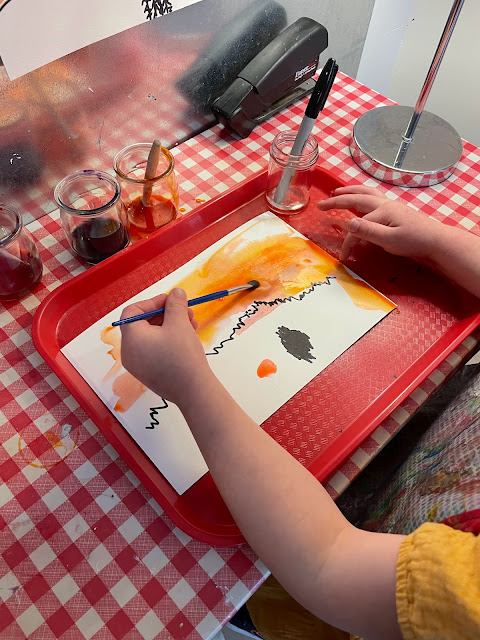Alan Syliboy
The school year is back in full swing and big things are happening in our Art Studio.
This month's project is focusing on local Mi'kmaq artist Alan Syliboy. The children have been invited to look at his work while we talk about what the work makes us feel, and what the word "Mi'kmaq" means in our community.
From: https://alansyliboy.ca/about/
"Alan Syliboy grew up believing that native art was generic. 'As a youth, I found painting difficult and painful, because I was unsure of my identity.' But his confidence grew in 1972 when he studied privately with Shirley Bear. He then attended the Nova Scotia College of Art and Design, where 25 years later, he was invited to sit on the Board of Governors. Syliboy looked to the indigenous Mi’kmaq petroglyph tradition for inspiration and developed his own artistic vocabulary out of those forms. His popularization of these symbolic icons has conferred on them a mainstream legitimacy that restores community pride in its Mi’kmaq heritage.
Alan still lives and works in Millbrook, NS, where he was born and raised. He creates his art in his studio in Truro, NS."
Alan's work:
Why should we study Mi'kmaq artists with children?
Studying local First Nation's art is not just about creating colourful masterpieces, it's a journey that fosters cultural understanding, respect, and creativity.
One of the most compelling reasons to introduce Mi'kmaq art to children is it's role in preserving and celebrating Indigenous culture. By learning about the rich artistic traditions of the Mi'kmaq people, children gain a deeper appreciation for the history and heritage of North American First Nations. Immersing ourselves in this kind of art is not just a form of self expression, but a powerful tool for story telling and cultural transmission.
Mi'kmaq art is renowned for it's intricate patters, vibrant colours and unique symbolism. Encouraging children to create their own Mi'kmaq inspired art pieces and unleash their creativity and provide a platform for self expression while honouring another culture's artistic traditions.
What is the process?
Children are invited to look at Alan's work and contemplate the painting. Asking questions such as "What do you see?" and "How does it make you feel?". Children are then directed to the oil pastels to start their work and outline the different shapes that will be used in their work. Finally, I model for the children how to use our water colour paints sparingly, as a little can go a long way. I have seen lots of joy come from the children experimenting with using the water colours over the oil pastels, and questioning why they do not blend together, another great learning opportunity.
I can't wait to see all the children's interpretations on Alan's work, its been a beautiful journey so far.
*Click Alan's picture to be sent to his website for access to purchasing his prints and more info about the artist.
-Ms Katie
Image from: https://alansyliboy.ca































